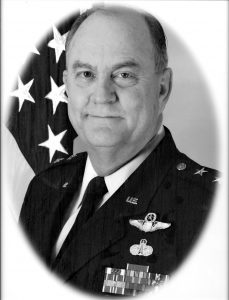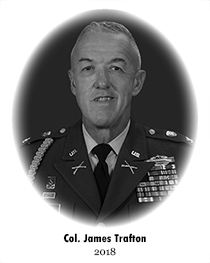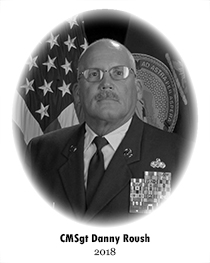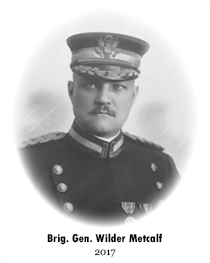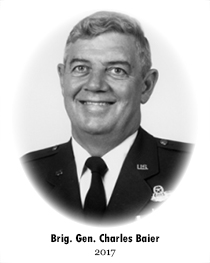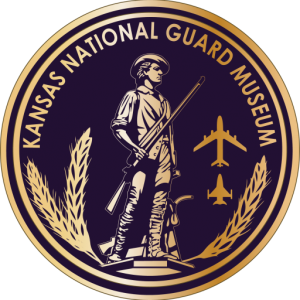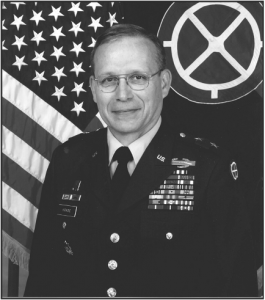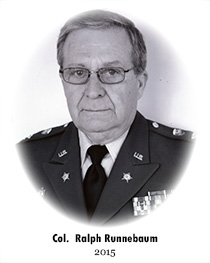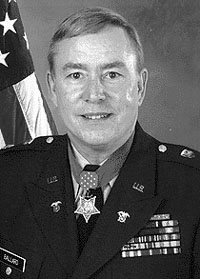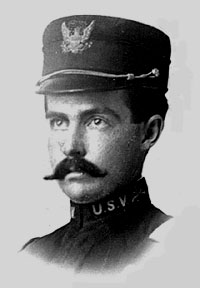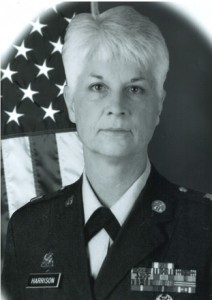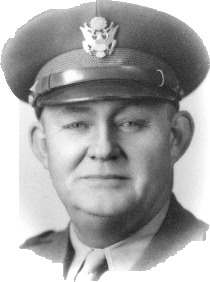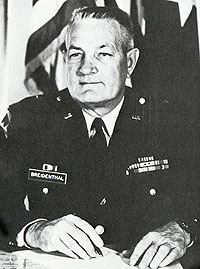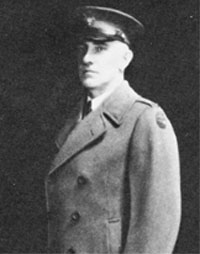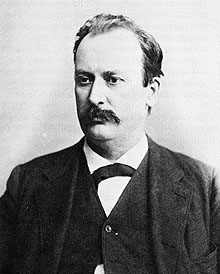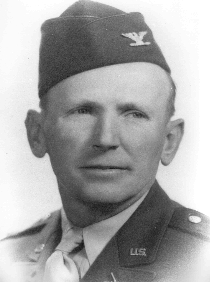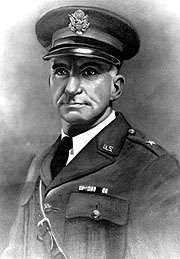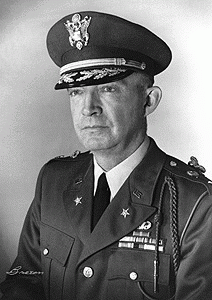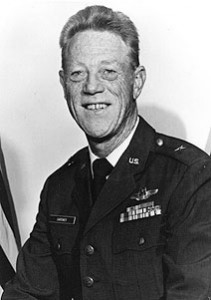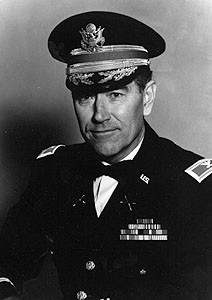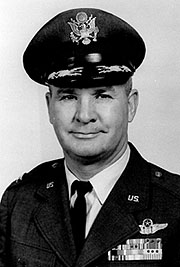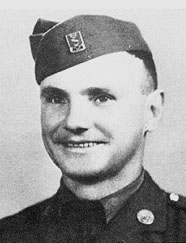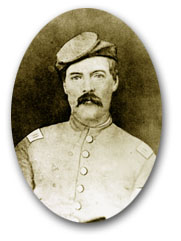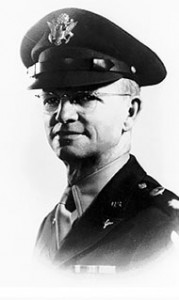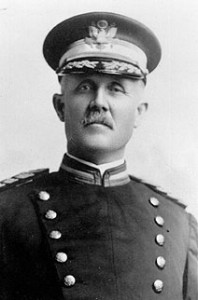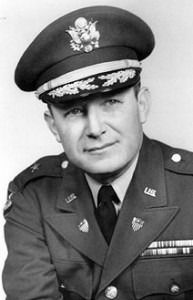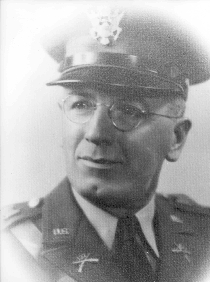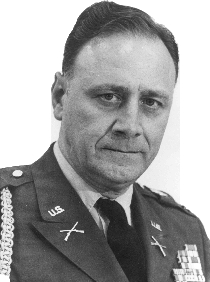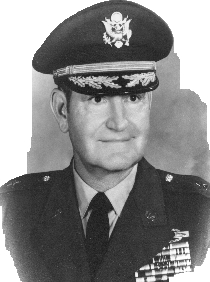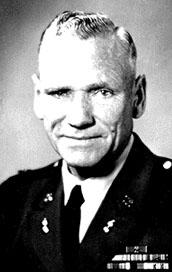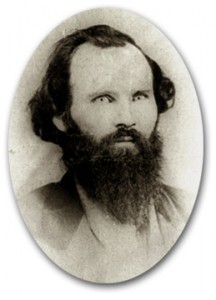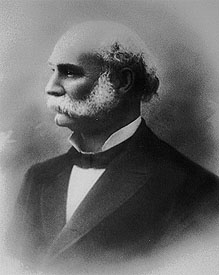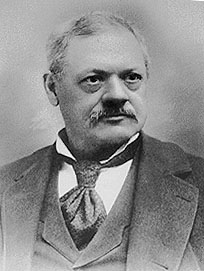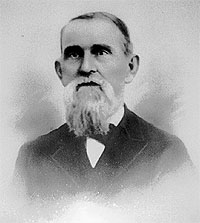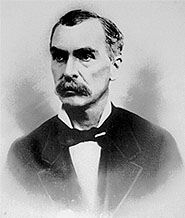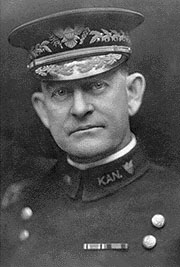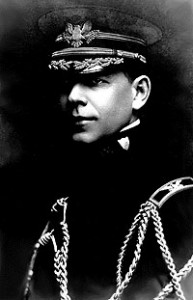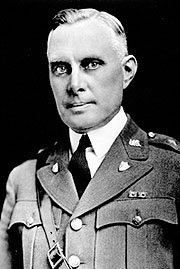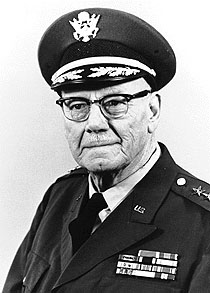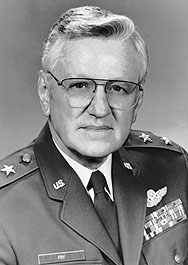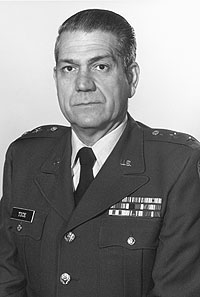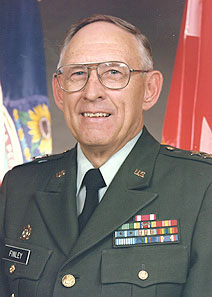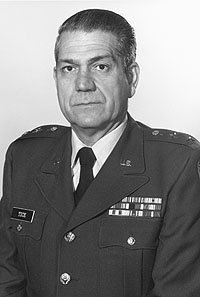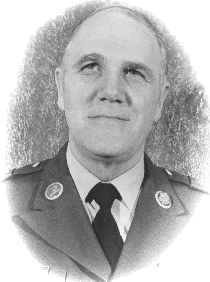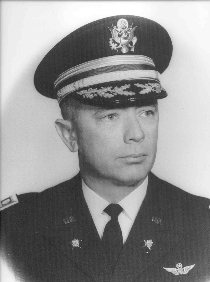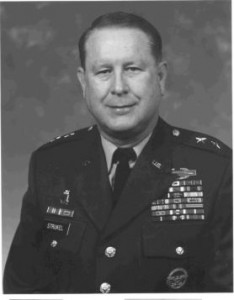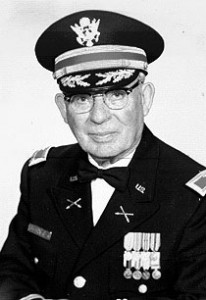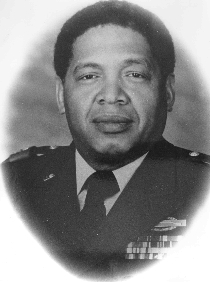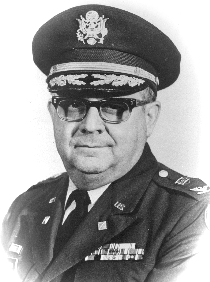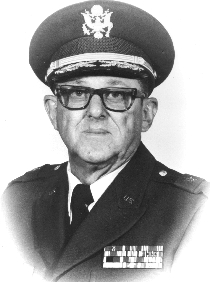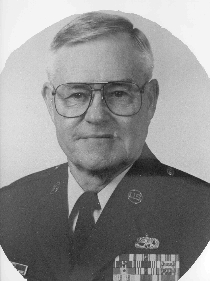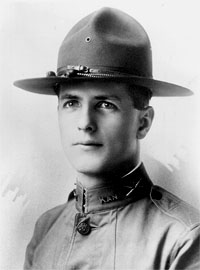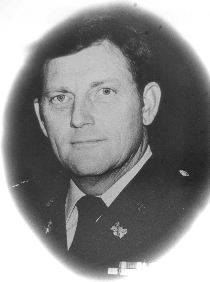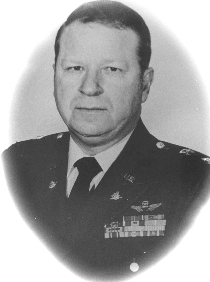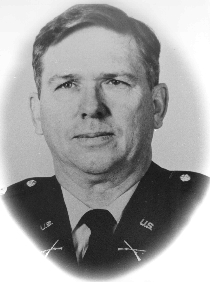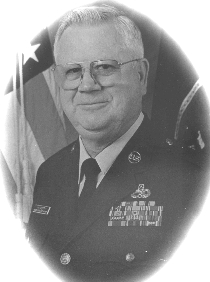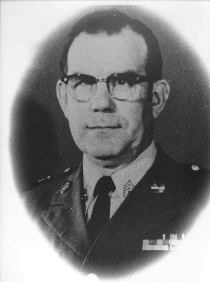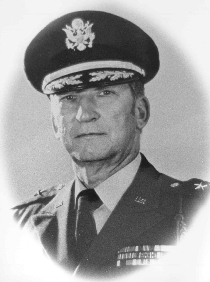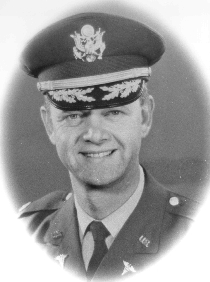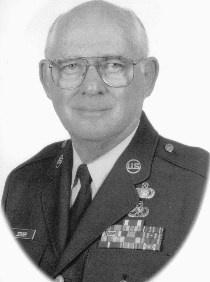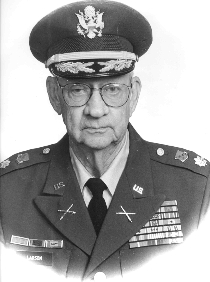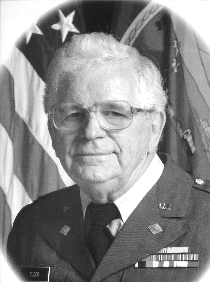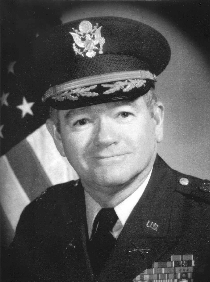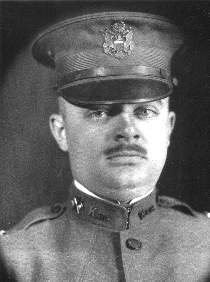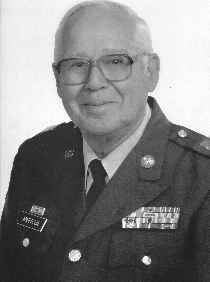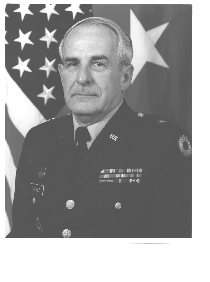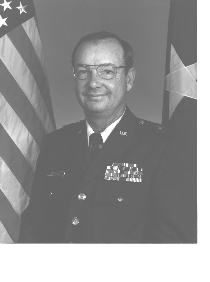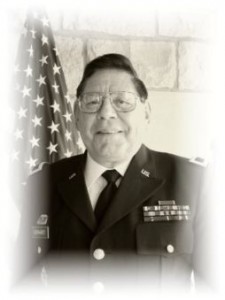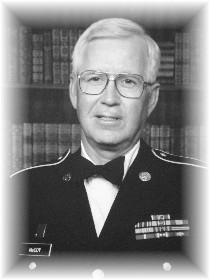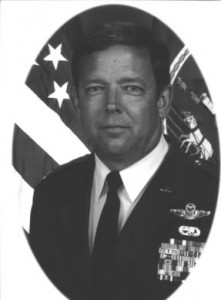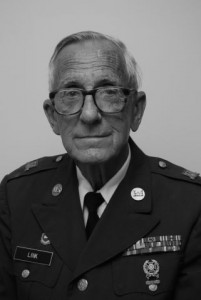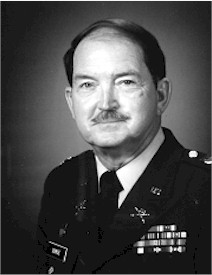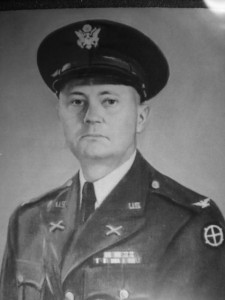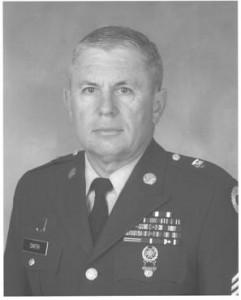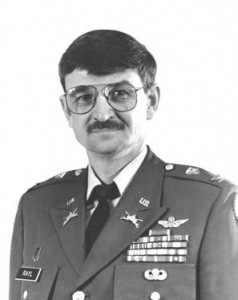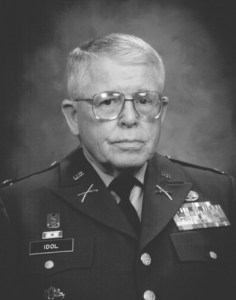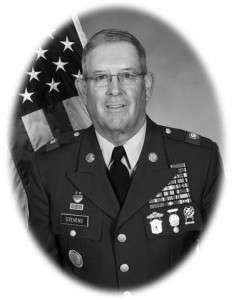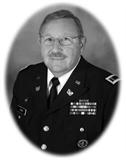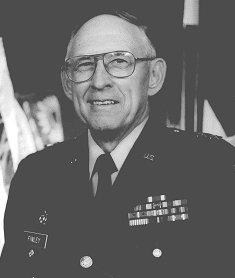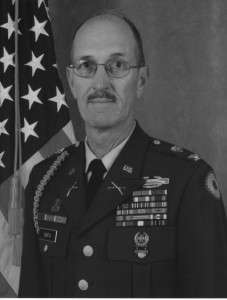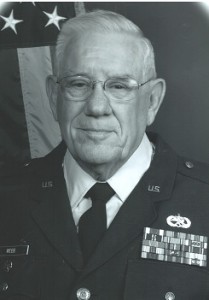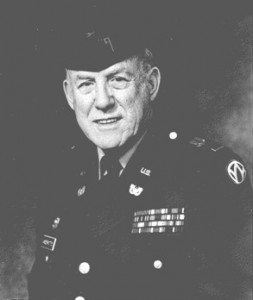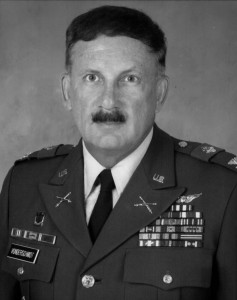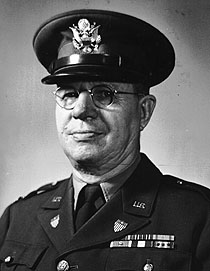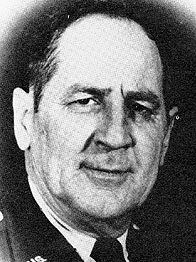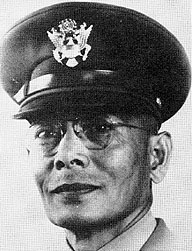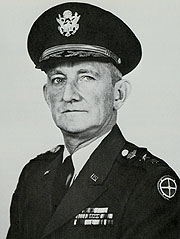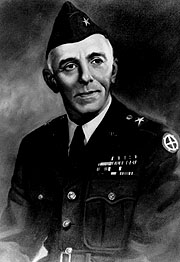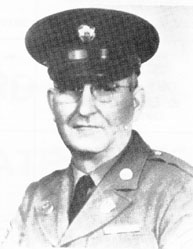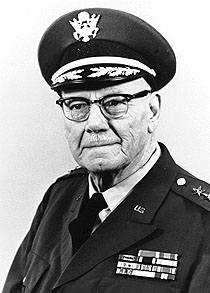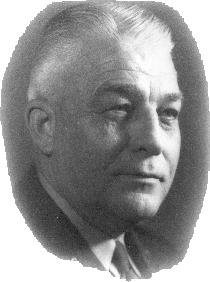The Thirteenth Regiment Kansas Volunteer Cavalry was raised under a call made by the President in the month of July, 1862, for 300,000 volunteers for “Three Years or during the war.” Under this call, the quota of Kansas was three regiments of infantry. Hon. J. H. Lane, U. S. Senator from Kansas, was authorized to superintend the recruiting of all three regiments, and officer the same when organized and mustered into the United States service.
In the month of August, 1862, Cyrus Leland, Sen., was appointed Recruiting Commissioner for the counties of Atchison, Brown, Doniphan, Marshall and Nemaha, and established the general rendezvous at Camp Staton, city of Atchison. The men composing the Regiment were the most substantial citizens of the community – mostly men of families and property, principally farmers.
The recruits were organized as a regiment on the 10th of September, 1862, and on the 20th of the same month were mustered into the United States service at Camp Staton, Kansas by 2d Lieut. Wm. M. Watts, 3d U. S. Cavalry, Mustering officer, with the following staff officers, viz.:
Colonel – Thomas M. Bowen, from Captain Co. K, 9th Kansas Cavalry.
Lieutenant Colonel – John R. Wheeler.
Major – Caleb A. Woodworth, from Private Co. B, 10th Kansas Infantry.
Adjutant – Wm. P. Badger.
Quartermaster – Cyrus Leland, Sen.
Surgeon – Wm. M. Grimes.
Assistant Surgeon – John Becker.
Chaplain – Daniel A. Murdock.
The regiment remained at the rendezvous drilling and receiving instruction preparatory to entering the field for active service. Early in the month of October the regiment received marching orders, and proceeded at once via Leavenworth and Fort Scott, Kansas, to join Gen. Blunt’s command, then in the field, which it accomplished by dint of forced marches on the 29th of the same month, at Old Fort Wayne, Cherokee Nation, and henceforth was a part of the Army of the Frontier, and participated in the different engagements in the brilliant campaign against the rebel forces in Arkansas, which resulted in the ultimate defeat of Hindman’s entire army.
On the 31st of October, the regiment marched with the command to Camp Ewing, where it was mustered for pay, and from thence marched to Camp Bowen, Ark., on Spavinaw Creek, the camp having been named in honor of the Colonel of this regiment. Nothing of importance occurred at this place except the untimely death of Sergeant Noel, of Co. D, which was caused by the accidently discharge of a musket. It marched thence, on the 11th of November, to Camp Babcock, on Lindsay’s Prairie, Ark., where it remained, subsisting mainly on the country, awaiting the arrival of commissary supplies from Fort Scott, which we received the night of the 26th. Three days’ rations of hard bread and meat was issued, and the men ordered to supply themselves with eighty rounds of ammunition, preparatory to making an attack upon a rebel force under command of Marmaduke, who was reported encamped a short distance in front of the Army of the Frontier. On the morning of the 27th of November, the whole command moved very early, without transportation, in the direction of Cane Hill, where the rebel General Marmaduke had taken position with six thousand cavalry, two howitzers and a battery of artillery. The command executed the march of forty miles, and on the following morning made an attack upon the rebel force. After a short but spirited engagement, the enemy retreated from the town of Cane Hill to a bald knob on the crest of the Boston Mountains, where he made a desperate and stubborn resistance, but was finally compelled to retreat into the timber, keeping up a severe fire as he retreated, which was continued for a short distance of six miles, through brush and over rocks and ditches, to the junction of the Fayetteville and Cane Hill roads, where, at nightfall, the action was ended, the enemy having been completely routed and in full retreat south, leaving his dead and wounded on the field in the possession of our forces. In this engagement the 13th Regiment took an active part, and received the praise and admiration of the commanding General for the manner in which it maintained the reputation of Kansas soldiery.
The command bivouacked on the battle field for the night, and on the following morning returned to Cane Hill, where it encamped and awaited the arrival of the transportation.
The regiment remained in camp at Cane Hill until December 7th, when the enemy attacked the outposts in force, and gave evidence of a general engagement. In the meantime – Saturday night – a column of rebel infantry passed up the Fayetteville road, and before the movement was discovered, Hindman’s main force was in the rear of Gen. Blunt’s command, and had engaged the 2d and 3d Divisions, under command of Gen. Herron, on their way to reinforce Gen. Blunt, at the crossing of Illinois Creek, about thirteen miles northeast of Cane Hill.
At 10 o’clock, Sunday morning, Gen. Blunt began to fall back with his command towards Rhea’s Mills to join Gen. Herron, and at 3 o’clock reached the battlefield, where, for nearly five hours Gen. Herron, with a force of but five thousand men, had been contending against a rebel force which outnumbered his three to one, and fresh troops constantly arriving, continued to swell the rebel ranks.
The last five miles of the march of Gen. Blunt’s Division was made at double quick, being stimulated at hearing the roar of artillery and musketry, the 13th being amongst the first to take position on the battle field. It formed line of battle between the 10th and 11th regiments, on the right of the main command, in a thick wood just under the protection of a slight eminence of the ground in front, and was soon engaged against superior numbers, supporting the 2d Kansas Howitzers and one section of the 1st Kansas Battery. Several desperate attempts were made to capture the batteries, but were as often repulsed with terrible slaughter. After dark the regiment, with the division, retired a few hundred yards from the battle field and bivouacked in the edge of an open space for the night, expecting to renew the attack the following morning. But under cover of the darkness the rebels muffled the wheels of their artillery, and commenced a hasty retreat in the direction of the Arkansas River. The next morning the rebel General Hindman sent a flag of truce to Gen. Blunt, asking an armistice to enable them to care for the wounded, without reference to his retreating forces, under which he no doubt contemplated a successful retrograde movement, and succeeded in getting two hours, which afforded him an opportunity to join his retreating columns with safety to himself.
The loss in killed and wounded on the part of the Union forces numbered about twelve hundred, of which the 13th lost a large per cent.
The following extract is taken from Col. Wm. Weer’s official report:
Head’qrs 2d Brig. 1st Div
Army of the Frontier,
Camp at Cane Hill, Ark., Dec. 12, 1862.
Colonel – . . . I cannot be too earnest in my commendations of Col. Bowen, commanding 13th Kansas, Maj. Williams, commanding 10th Kansas, and Lieut. Tenney, commanding 1st Kansas Battery, all of my own brigade. Their daring, skill and active endeavors in the rallying and management of their men, amid storms of bullets, deserve not only honorable mention, but a place upon the record of those who merit promotion.
LIEUT. COL. MOONLIGHT, Chief of Staff
The following is a list of killed and wounded in the 13th Regiment, as exhibited by the official report, viz:
Company A – Captain Samuel Flickinger commanding. Wounded: Private W. H. Reed, head, slightly; private C. D. Bodkins, leg, slightly.
Company B – Lieut. Marion Beeler commanding. Wounded: 1st Sergeant J. F. Kotsch, mouth severely; private W. D. Moore, face and shoulder; private J. Walker, leg, slightly; private E. Alexander, ankle, slightly; private E. S. Butler, knee, severely; private J. N. Welsh, hip, severely; private J. Maquiken, arm, slightly; private R. Arthur, arm, slightly; private Wm. A. Iles, hip, slightly; private T. T. Smith, belly, slightly.
Company C – Captain H. Robertson commanding. Killed: Private Eli T. Vickery. Wounded: Private H. O. Stratton, leg, severely; private W. Higgins, slightly; private W. Cummings, slightly; private W. S. Sproals, slightly. Missing: Privates W. Nesse, J. D. Clift, W. F. Bunce, and B. F. Gilmore.
Company D – Captain H. R. Neal, commanding. Killed: Private John Rhoades, (died the day following). Wounded: Sergeant W. Elliott, arm, severely; Sergeant A. Frahm, arm, severely; private O. J. Norris, arm severely; private John Becht, lungs, mortally, (name omitted on other records).
Company E – Captain P. Hutchinson commanding. Killed: Sergeant Benjamin Hornbeck. Wounded: Private James Harris, arm, slightly; private James Stewart, leg, severely.
Company F – Lieut. Wm. J. May commanding. Wounded: Lieut. Wm. J. May, thigh severely; corporal H. M. Higley, ankle. This company was commanded by 1st Sergeant Robt. Grimes after Lieut. May was wounded.
Company G – Captain W. S. Blackburn commanding. Killed: Private John H. Clapp. Wounded: Private J. W. Oliver, hip, severely; private J. G. Ratcliff, hip, slightly; private R. Foster, head.
Company H – Captain O. H. Macauley commanding. Killed: Sergeant John Neal. Wounded: Lieut. Jas. C. McElroy, side, slightly; private A. J. Owen, lungs, severely; private G. Welchouse, leg; private W. B. Henderson, foot, slightly; private J. Abshear, head, slightly; private A. Wamsberry, head and hand.
Company I – Captain John Schilling commanding. Killed: Corporal John Jones; private Newton Sevier. Wounded: Lieut. Langdon M. Risley, hip, severely; 1st Sergeant John H. Croft, thigh, severely; corporal Robert Pollock, side, severely; corporal C. Weisenheimer, side and leg, slightly; private Daniel McAuley, side, slightly. Missing: Private Michael Flanigan.
Company K – Captain Patrick McNamara commanding. Killed: Private Lorenzo Richardson. Wounded: Sergeant Martin D. Miller, slightly; private John Burnes, slightly; private Michael Collins, slightly.
The casualties in the Regiment are as follows: Killed, 8; wounded, 43, missing, 5. Total, 56.
After the engagement at Prairie Grove, the Regiment encamped at Rhea’s Mills, and afterwards returned to its old camping ground at Cane Hill, where it remained until the 27th of December, when it moved with the army in the direction of Van Buren, on the Arkansas River, where it arrived the following day. This march cost the Regiment more men than all the battles in which it was engaged, having to wade Cove Creek, a rapid mountain stream, some places waist deep, thiry-nine [sic] times between Cane Hill and the junction formed with Lee’s Creek, it being one of the coldest days of the season. Numerous cases of pneumonia and chronic rheumatism were the result of this exposure.
After the capture of the town of Van Buren, the regiment marched with the army, accompanied by hundreds of contrabands with wagons, carriages and vehicles of various descriptions, together with a few refugees. The transportation was joined at Rhea’s Mills, where Gen. Blunt was relieved by Gen. Schofield, and the army ordered to Elm Springs, twelve miles from Fayetteville, where the regiment remained in camp until the 7th of January, 1863, when it was ordered, on a forced march, to Springfield, Mo., for the purpose of repelling an attack upon that place by the rebel Gen. Marmaduke, but arrived too late to participate in the engagement. The regiment was retained at Springfield, performing garrison and escort duty, until spring. In the meantime a portion of it was engaged in a raid on the town of Forsythe, on White River.
On the 19th of May it marched for Fort Scott, Kansas, where it arrived on the 29th of the same month, and from thence moved to Drywood, on outpost duty.
The regiment remained on the vicinity of Fort Scott about two months, during which time most of the men and officers received twenty days’ furlough. On the 3d of August the regiment again took the field with Gen. Blunt, participating in his famous campaign against the rebel Generals Cooper, Cabell, Steele and Stand Waitie, which resulted in driving the enemy to the waters of Red river and the capture of Fort Smith.
The regiment marched during the month of August, over four hundred miles, performing a march of two hundred miles in the last ten days of the month. During the campaign it marched thirty-eight miles in one day – the day of the engagement at Perryville, Ark.
The troops being completely worn out, the pursuit was abandoned, and the command moved leisurely in the direction of Fort Gibson, except one Brigade, of which the 13th regiment formed a part, which was ordered to Webber’s Falls, C. N., on the Arkansas river, where it arrived on the last day of August, and remained there until the 15th of the following month, when it marched to Scullyville, C. N., where it performed outpost and scouting duty until the 6th of October, when it marched to Van Buren, Ark., and went into winter quarters, performing post, foraging and escort duty, until the month of March, 1864, when a portion of the regiment – Cos. A, C, D, G, H and I – were ordered to Fort Smith, Ark., where they were placed on garrison duty, Cos. B, E and F remaining at Van Buren. Thus this little regiment garrisoned the two posts last mentioned during the absence of the command on the Camden Expedition, and subsequent to its return, without any assistance except a few companies of the 6th Kansas Cavalry, and four parts of companies of recruits of the U. S. C. T.
After the disastrous campaign of the 7th Corps south, the guerillas became so numerous and bold in the vicinity of Van Buren and Fort Smith, that small squads dare not venture beyond the line of entrenchments except at the peril of life or captivity. Foraging parties were continually being attacked, some times with slight loss to the 13th. In the month of August, ’64, Col. Bowen, of the 13th, was captured and carried off a prisoner while breakfasting within rifle shot of the pickets, but succeeded in making a compromise with the bushwhackers, and was released the same day he was captured. On the 1st of the same month, Captain Marion N. Beeler, Co. B, in command of a scouting party, consisting of Cos. B and F, attacked a band of guerrillas in the night that had taken refuge in a log house, in which the Captain received a mortal wound, and one enlisted man wounded.
The guerrillas were finally routed with the loss of their leader and three men killed, and all their horses, saddles, bridles and camp equipage.
Thus the summer passed, occasionally a man being killed or carried off a prisoner. It appears that no official reports of the various engagements of detachments of the regiment were ever made. Although no severe fighting occurred while the regiment was stationed at those places, it was subjected to many privations, being frequently on half or quarter rations, and not averaging half rations during the whole time, with the exception of meat.
The discipline and drill of the regiment was excellent, and reports of Inspecting Officers show it to have been one of the very best in the Department of Arkansas.
On the 3d of March, 1865, the regiment was ordered to proceed to Little Rock, Ark. Upon its arrival at that place, it was immediately placed on provost guard and garrison duty, and remained there until the 26th of June, when it was mustered out of service. It was then ordered to proceed to Fort Leavenworth, Kansas, where it received final payment, and was discharged from the service of the United States on the 13th day of July, 1865.
(SOURCE: Report of the Adjutant General of the State of Kansas, 1861-’65. Topeka, Kansas: Kansas State Printing Plant (1896 reprint). Transcription provided by Jeff Dunaway, Civil War Round Table of Eastern Kansas.)

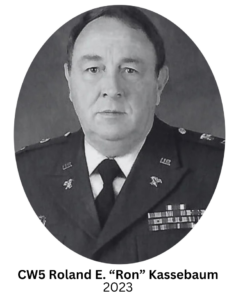 CW5 Roland E. “Ron” Kassebaum was born on February 21, 1946 in Deshler, Nebraska. He graduated from Hebron High School, Hebron, Nebraska in 1964. He attended Fairbury Junior College, Fairbury, Nebraska and the University of Nebraska, Lincoln, Nebraska, and received a Bachelor of Science Degree from the University of the State of New York in 1991. He later attended Liberty University, Lynchberg, Virginia, for courses in accounting and Allen County Community College, Iola, Kansas, for a course in Business Law.
CW5 Roland E. “Ron” Kassebaum was born on February 21, 1946 in Deshler, Nebraska. He graduated from Hebron High School, Hebron, Nebraska in 1964. He attended Fairbury Junior College, Fairbury, Nebraska and the University of Nebraska, Lincoln, Nebraska, and received a Bachelor of Science Degree from the University of the State of New York in 1991. He later attended Liberty University, Lynchberg, Virginia, for courses in accounting and Allen County Community College, Iola, Kansas, for a course in Business Law.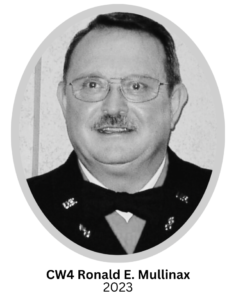 Chief Warrant Officer Four Ronald E. Mullinax was born on August 25, 1946, in Norton, Kansas to Earl and Mary Posson. He was adopted by John and Ada Mullinax. He grew up in Lenora, Kansas, graduating from Lenora Rural High School in 1965. After completing a Denver Automotive Institute training program, Ron worked at Look Body Shop in Norton until 1968.
Chief Warrant Officer Four Ronald E. Mullinax was born on August 25, 1946, in Norton, Kansas to Earl and Mary Posson. He was adopted by John and Ada Mullinax. He grew up in Lenora, Kansas, graduating from Lenora Rural High School in 1965. After completing a Denver Automotive Institute training program, Ron worked at Look Body Shop in Norton until 1968. CCMSgt Valerie D. Benton was born on Dec. 10, 1959 in Racine, Wisconsin, where she spent her childhood. She graduated from Washington Park High School in 1978. Soon after graduation she enlisted in the U. S. Air Force and headed to Basic Training at Lackland AFB, Texas in December of 1978. After completion of Basic training, she attended Technical Training at Lowry AFB, Colorado, and graduated as a Food Service Specialist.
CCMSgt Valerie D. Benton was born on Dec. 10, 1959 in Racine, Wisconsin, where she spent her childhood. She graduated from Washington Park High School in 1978. Soon after graduation she enlisted in the U. S. Air Force and headed to Basic Training at Lackland AFB, Texas in December of 1978. After completion of Basic training, she attended Technical Training at Lowry AFB, Colorado, and graduated as a Food Service Specialist.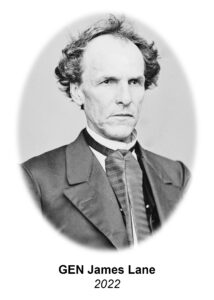 General James H. Lane was a militia leader during the Bleeding Kansas period, the commander of the Kansas “Jayhawker” Brigade during the Civil War, and was one of the first United States Senators from Kansas.
General James H. Lane was a militia leader during the Bleeding Kansas period, the commander of the Kansas “Jayhawker” Brigade during the Civil War, and was one of the first United States Senators from Kansas.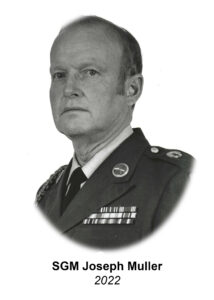 Sergeant Major Joseph T. “Jody” Muller was selected for the Kansas National Guard Hall of Fame for his exceptional service as a citizen soldier in the Kansas National Guard for over 41 years.
Sergeant Major Joseph T. “Jody” Muller was selected for the Kansas National Guard Hall of Fame for his exceptional service as a citizen soldier in the Kansas National Guard for over 41 years.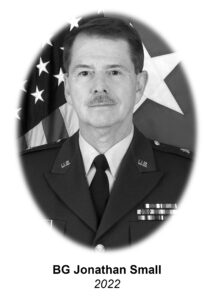 Brigadier General Jonathan P. Small served as The Adjutant General of Kansas from November 1, 2003 to January 4, 2004, culminating a 35-year military career as a distinguished attorney, community leader, citizen-soldier, and military leader. He served as Assistant Adjutant General-Army from 1999 to 2003, and as Commander of the Land Component for the Joint Force Headquarters-Kansas.
Brigadier General Jonathan P. Small served as The Adjutant General of Kansas from November 1, 2003 to January 4, 2004, culminating a 35-year military career as a distinguished attorney, community leader, citizen-soldier, and military leader. He served as Assistant Adjutant General-Army from 1999 to 2003, and as Commander of the Land Component for the Joint Force Headquarters-Kansas.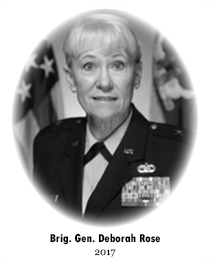 Brigadier General Deborah Rose entered military service with a direct commission into the United States Air Force Nurse Corps in March 1983, assigned to the 184th Tactical Fighter Group. She transferred to the 190th Clinic in December 1985. In October 1990, she deployed to Jeddah, Saudi Arabia, where she served in an Air Transportable Hospital during Desert Shield. In February 1991, she was activated and deployed to Offutt AFB, Nebraska, assigned to the hospital.
Brigadier General Deborah Rose entered military service with a direct commission into the United States Air Force Nurse Corps in March 1983, assigned to the 184th Tactical Fighter Group. She transferred to the 190th Clinic in December 1985. In October 1990, she deployed to Jeddah, Saudi Arabia, where she served in an Air Transportable Hospital during Desert Shield. In February 1991, she was activated and deployed to Offutt AFB, Nebraska, assigned to the hospital.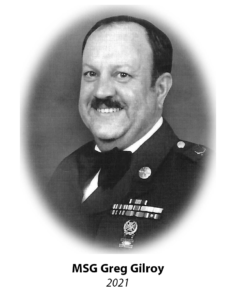 Master Sergeant Greg Gilroy was born on July 25, 1947 at Ottawa, Kansas. He was a lifelong resident of Ottawa, graduating from Ottawa High School in 1965. He then attended Emporia State University during the 1965-66 school year.
Master Sergeant Greg Gilroy was born on July 25, 1947 at Ottawa, Kansas. He was a lifelong resident of Ottawa, graduating from Ottawa High School in 1965. He then attended Emporia State University during the 1965-66 school year.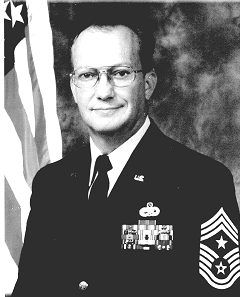
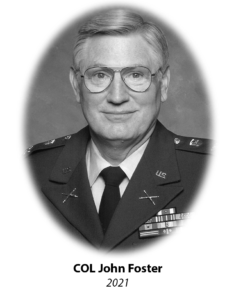
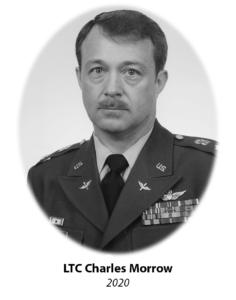
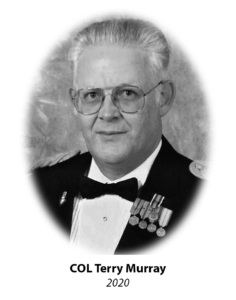

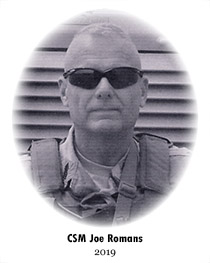
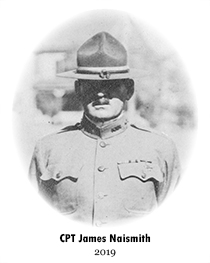

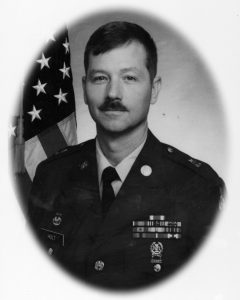 Sergeant Major Lynn E. Holt built his distinguished Kansas Army National Guard career developing strength, retaining Soldiers and insuring Soldiers received proper training. He served from the Detachment through State level. He is known for his ability to recognize Soldier needs at all levels. The same care he felt for Soldiers carried over into his community activities. SGM Holt’s passion for people and their needs exemplifies his true character. He devoted his entire adult life to the betterment of our nation, our state and the Kansas National Guard.
Sergeant Major Lynn E. Holt built his distinguished Kansas Army National Guard career developing strength, retaining Soldiers and insuring Soldiers received proper training. He served from the Detachment through State level. He is known for his ability to recognize Soldier needs at all levels. The same care he felt for Soldiers carried over into his community activities. SGM Holt’s passion for people and their needs exemplifies his true character. He devoted his entire adult life to the betterment of our nation, our state and the Kansas National Guard.